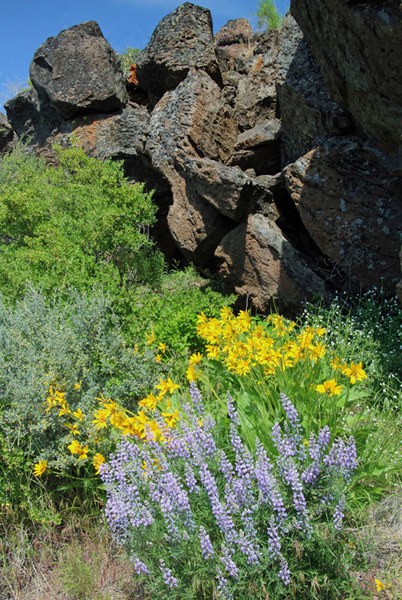Welcome to Cool Words for Hot Times, an ongoing series in which we’ll unpack and break down the jargon-riddled world of climate change. Today, we're focusing on indicator species.
It’s officially spring now, but with an unseasonably warm February and early March, it’s felt spring-like for quite a while in the eastern half of Oregon. The warmth and color that mark the changing of seasons have been out and about for weeks—wax currants are a-budding’, birds are a-chirpin’, and the time is ripe for getting those milkweed seeds a-sproutin’.
But as mountain bikes and trail running shoes re-emerge to replace skis and snowboards, and the snow feebly clings to Black Butte’s north-facing slope, it’s hard not to wonder, “Wait, isn’t this all happening a little early?”
In short, my friend, the answer is yes—at least by comparison to historical norms—and it turns out that this type of observation can be useful in detecting and understanding the impacts of climate change. Whether it’s increasingly early blooms, animals rapidly shifting their habitat upslope, or changing wintering ranges for birds, there are many indicator species that demonstrate how increasing atmospheric temperatures affect our planet.
In ecology, the concept of indicator species has long existed in contexts other than climate change. Most broadly, an indicator species is a species whose presence, absence, or condition indicates the state of an ecosystem’s total health. When it comes to climate change, indicator species can signal the rate at which climate change is affecting an ecosystem, as well as the severity of these effects. These species serve as a proxy for other environmental impacts that may be harder to detect, and they also offer a sort of indicator “two-way street.” In other words, sometimes we use our understanding of climate change as a means of assessing impacts on species, and other times, species themselves allow for a better understanding of how and where climate change impacts different regions.
Amazingly, observations of indicator species are some of the best data we have on long-term climatic changes since the Industrial Revolution, when human-caused warming ramped up in earnest. For example, Henry David Thoreau, that legend of high school English classes and proponent of self-reliance (one wonders, how might he have translated his experiences at Walden Pond to weathering a COVID-19-induced teleconferencing-based existence?) meticulously recorded the dates when hundreds of species of flowers opened for the first time each spring near his home in Concord, Massachusetts. By comparing Thoreau’s notes to the dates that flowers first open in the present day, scientists have determined that many species have shifted their bloom times five or six weeks earlier since the 19th century. Eventually, these kinds of flowers may no longer be able to survive in their current locations, and will likely transition elsewhere to adapt.
Bird wintering ranges also commonly serve as climate change indicators. Over the past 50 years, evidence shows that birds generally have significantly expanded their wintering ranges, including moving further north and further inland. Since birds rely on environmental cues to migrate and breed, this range shift suggests that those cues—and, by extension, ecosystems themselves—have rapidly changed in the same time period, including becoming warmer.
If this pattern were observed in just one bird species, it might not conclusively mean anything. However, as with earlier bloom dates, the fact that hundreds of bird species have expanded their wintering ranges over a relatively short period suggests a common influencing factor: climate change.
So why does the Deschutes Land Trust care about climate change indicators, and specifically indicator species? In short, these species may offer the best insight into the rate and impacts of climate change locally, particularly in the absence of climate change studies focused on the Deschutes River and the surrounding area. Plus, indicators such as leaf and bloom dates and bird presence/absence are relatively easy to record in the field.
If we can grasp these patterns, we can in turn begin to better understand how to manage for changing species on our preserves and easements and achieve overall health of our forests, streams, and grasslands. How, specifically, we should accomplish these management adjustments remains uncertain, but indicators give us a running start.
Learn More:
- Check out the Deschutes Land Trust Climate Change Commitment


